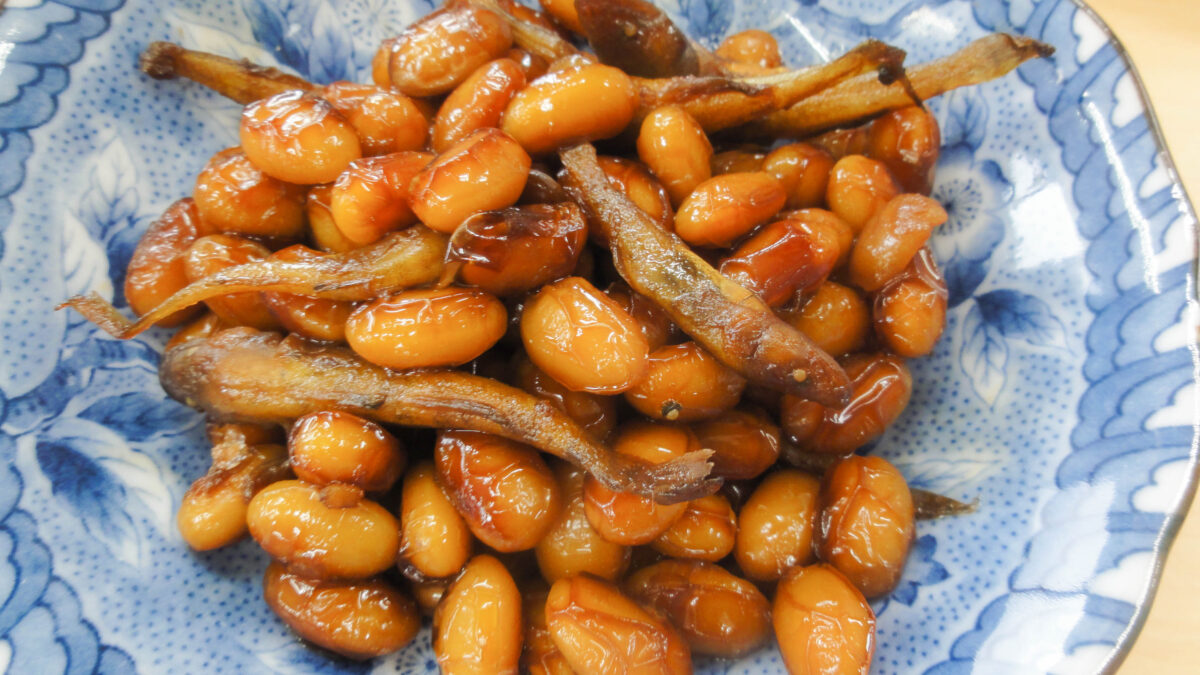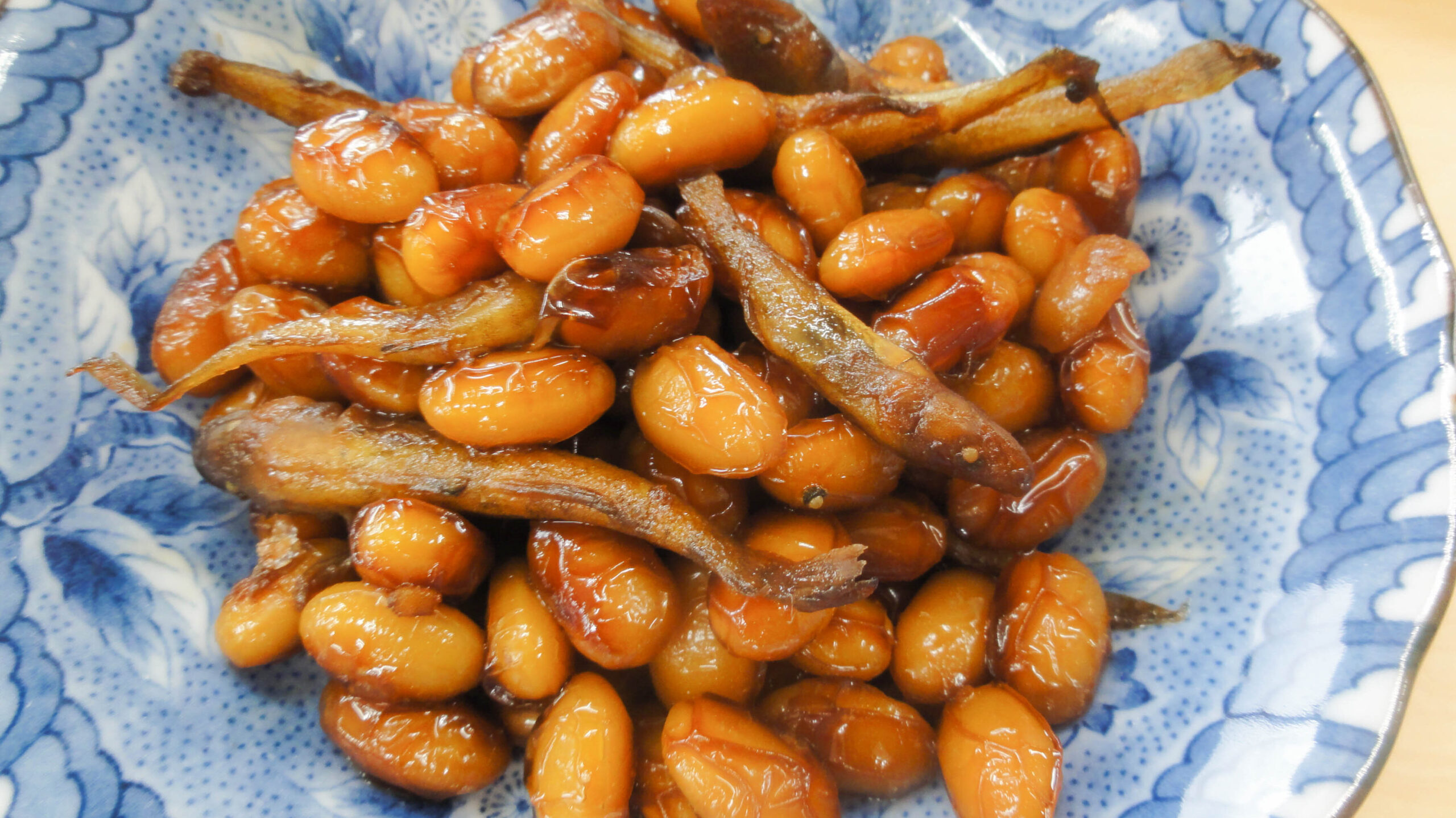
Alright, let’s talk about a unique little dish from Shiga Prefecture called “Isaza Mame”. It’s a simple, home-style dish that combines tiny fish from Lake Biwa with soybeans in a savory-sweet simmer. This dish really highlights the flavors of the lake and the land, and it’s been a local favorite for generations, especially for celebrations.
Dish Name: Isaza Mame / いさざ豆
- Region / Location: Primarily in Nagahama and Takashima Cities, but found throughout Shiga Prefecture.
- Primary Area of Tradition: Throughout Shiga Prefecture, especially the northern regions.
- Main Ingredients: Isaza fish, soybeans, soy sauce, etc.
How It’s Eaten / Served
Isaza Mame is a *tsukudani*, a simmered dish. Soybeans are soaked overnight and then boiled until tender. Then, Isaza fish and seasonings are cooked together in a pot. Once the fish is cooked, the boiled soybeans are added and simmered further. When most of the liquid has reduced, a touch of *mirin* sweet rice wine is added and swirled to coat everything. This final addition of mirin gives the dish a nice glossy finish. After letting it cool a bit, the contents of the pot are stirred and turned over to ensure even flavoring.
Cultural Background and Preservation
Isaza Mame is a local dish that features Isaza, a type of goby fish that’s unique to Lake Biwa, and soybeans. Isaza are caught from autumn to spring (September to April), and this dish is popular throughout Shiga Prefecture, especially in the northern areas. The combination of Isaza and soybeans is a nutritional powerhouse. Soybeans are often called “field meat” in Japan because they’re packed with protein. Isaza Mame is a regular dish in many homes, and it’s often served at important events like weddings and funerals in the northern part of Shiga.
Isaza is considered one of Lake Biwa’s eight delicacies, known as “Biwako Hatchin.” These small fish, only about 7cm long, live in the deeper parts of the lake (around 70m). They have a mild but delicious flavor and are also used in other dishes like *junjun*, a Biwa-style sukiyaki. The amount of Isaza caught varies from year to year, but you can usually find them for sale at roadside stations near fishing ports and in shops specializing in lake fish.
Since Isaza are caught between September and April, Isaza Mame is typically enjoyed from autumn to spring. It’s a common dish at celebratory events during the Isaza season, and it’s also eaten as an everyday side dish.
Isaza Mame is still made in homes today and passed down through families. It’s even served in school lunches, so younger generations are familiar with it. You can also easily find it at restaurants and roadside stations.
Additional information:
- Isaza (イサザ): A small goby fish endemic to Lake Biwa.
- Daizu (大豆): Soybeans.
- Tsukudani (佃煮): A cooking method where ingredients are simmered in soy sauce, sugar, and mirin.
- Mirin (味醂): Sweet rice wine used for cooking.
- Biwako Hatchin (琵琶湖八珍): The eight delicacies of Lake Biwa.
- Junjun (じゅんじゅん): A sukiyaki-style hot pot dish made with fish and vegetables.
The information about regional cuisine featured on this website (Piggy's Grandma of Japan) is summarized and adapted from the Ministry of Agriculture, Forestry and Fisheries of Japan (MAFF) website, "Our Regional Cuisines"Additional commentary is provided based on the unique experiences and perspectives of the site's editors.
The copyright for the original content regarding regional cuisine belongs to the Ministry of Agriculture, Forestry and Fisheries of Japan.
The summaries and adaptations published on this site are intended for informational purposes only. Piggy's Grandma of Japan does not guarantee the accuracy or completeness of this information. For the most accurate and complete details, please refer to the original pages on the MAFF website.



